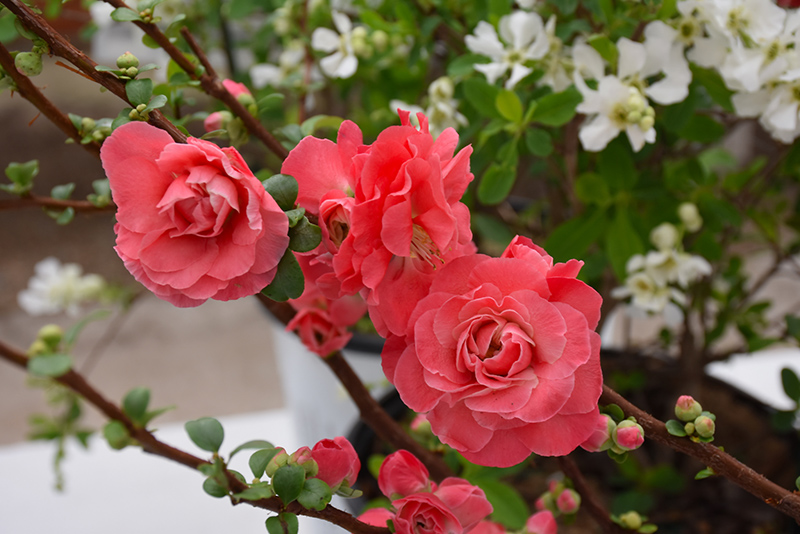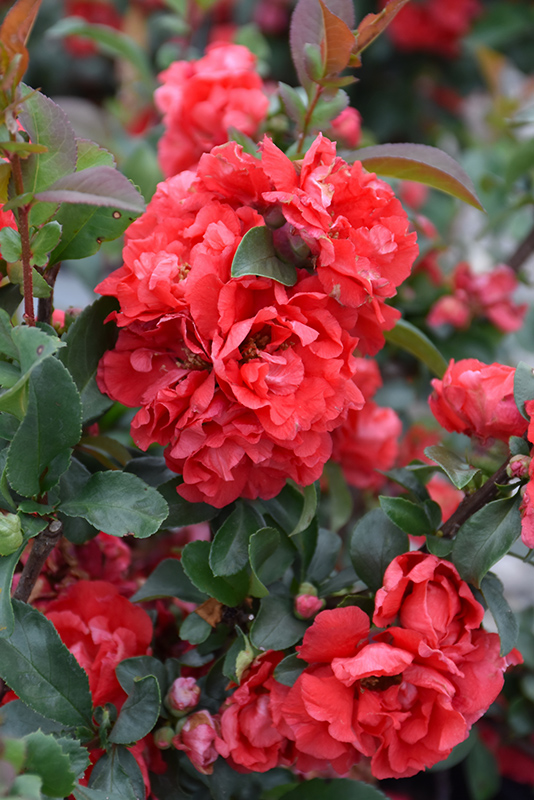Double Take Pink Storm Flowering Quince
Chaenomeles speciosa 'Pink Storm'
Height: 4 feet
Spread: 4 feet
Sunlight:
![]()
Hardiness Zone: 5
Other Names: Common Quince
Group/Class: Double Take Series
Description:
A small shrub covered in coral pink flowers in spring, a profuse bloomer; more compact than the species; thornless and does not produce fruit; a single-season showstopper adding vivid color in spring; prune to maintain shape
Ornamental Features
Double Take Pink Storm Flowering Quince features showy coral-pink cup-shaped flowers with buttery yellow eyes along the branches in early spring before the leaves. The flowers are excellent for cutting. It has green deciduous foliage which emerges red in spring. The glossy oval leaves do not develop any appreciable fall color.
Landscape Attributes
Double Take Pink Storm Flowering Quince is a dense multi-stemmed deciduous shrub with a more or less rounded form. Its average texture blends into the landscape, but can be balanced by one or two finer or coarser trees or shrubs for an effective composition.
This shrub will require occasional maintenance and upkeep, and should only be pruned after flowering to avoid removing any of the current season's flowers. Deer don't particularly care for this plant and will usually leave it alone in favor of tastier treats. It has no significant negative characteristics.
Double Take Pink Storm Flowering Quince is recommended for the following landscape applications;
- Mass Planting
- Hedges/Screening
- General Garden Use
Planting & Growing
Double Take Pink Storm Flowering Quince will grow to be about 4 feet tall at maturity, with a spread of 4 feet. It tends to fill out right to the ground and therefore doesn't necessarily require facer plants in front. It grows at a medium rate, and under ideal conditions can be expected to live for 40 years or more.
This shrub should only be grown in full sunlight. It is very adaptable to both dry and moist locations, and should do just fine under average home landscape conditions. It may require supplemental watering during periods of drought or extended heat. It is not particular as to soil type or pH. It is highly tolerant of urban pollution and will even thrive in inner city environments. Consider applying a thick mulch around the root zone in both summer and winter to conserve soil moisture and protect it in exposed locations or colder microclimates. This is a selected variety of a species not originally from North America.


